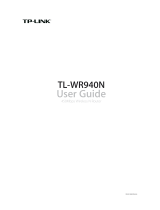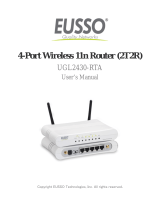
5.4.5 Wireless Advanced ....................................................................................... 45
5.4.6 Wireless S
tatistics......................................................................................... 46
5.5 Wireless 5GHz
.........................................................................................................47
5.5.1 Wireless Set
tings..........................................................................................47
5.5.2 WPS
.............................................................................................................49
5.5.3 Wireless Sec
urity..........................................................................................51
5.5.4 Wireless MA
C Filtering .................................................................................54
5.5.5 Wireless Adv
anced ....................................................................................... 56
5.5.6 Wireless S
tatistics......................................................................................... 57
5.6 Guest Network
.........................................................................................................58
5.7 DHCP
.......................................................................................................................60
5.7.1 DHCP
Settings .............................................................................................60
5.7.2 DHCP
Clients List.........................................................................................61
5.7.3 Address Reserv
ation ....................................................................................61
5.8 USB Setting
s............................................................................................................63
5.8.1 Device Settings.............................................................................................63
5.8.2 File Sharing
..................................................................................................63
5.8.3 Print Serv
er................................................................................................... 66
5.9 NA
T Boost ................................................................................................................ 66
5.10 Forwarding
...............................................................................................................67
5.10.1 V
irtual Servers ..............................................................................................67
5.10.2 Port T
riggering ..............................................................................................69
5.10.3 DMZ
..............................................................................................................71
5.10.4 UPnP
............................................................................................................72
5.11 Security
....................................................................................................................73
5.11.1 Basic Security...............................................................................................73
5.11.2 Adv
anced Security........................................................................................ 74
5.11.3 Local Management
.......................................................................................76
5.11.4 Remote Management
...................................................................................77
5.12 Parent
al Control .......................................................................................................78
5.13 Access Control .........................................................................................................80
5.13.1 Rule ..............................................................................................................81
5.13.2 Host
..............................................................................................................86
5.13.3 T
arget............................................................................................................88
5.13.4 Schedule
.......................................................................................................89
5.14 Adv
anced Routing....................................................................................................91























